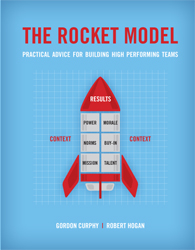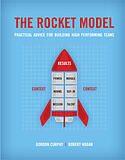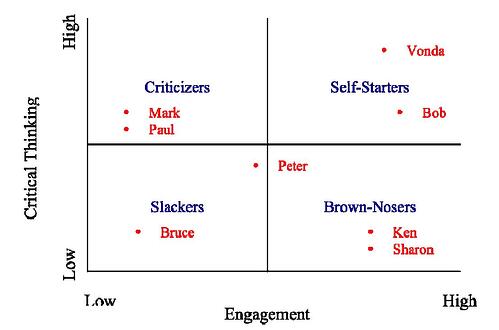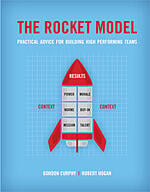 The current thinking about employee engagement is somewhat misguided since leaders tend to get all of the blame for having disengaged employees. Missing from this perspective is the fact that team members also bear some responsibility for where they fall on the disengagement-engagement continuum. All leaders can do is create an environment conducive to team member Buy-In; after that, it is up to each team member to decide to become fully engaged and committed to team success. There are three things that leaders can do to foster Buy-in: 1) establish credibility, 2) paint a compelling picture of the future, and 3) empower team members.
The current thinking about employee engagement is somewhat misguided since leaders tend to get all of the blame for having disengaged employees. Missing from this perspective is the fact that team members also bear some responsibility for where they fall on the disengagement-engagement continuum. All leaders can do is create an environment conducive to team member Buy-In; after that, it is up to each team member to decide to become fully engaged and committed to team success. There are three things that leaders can do to foster Buy-in: 1) establish credibility, 2) paint a compelling picture of the future, and 3) empower team members.
Establish Credibility. Interviews with thousands of people and over a million 360-degree feedback ratings show that credibility is a critical component of leader effectiveness and team success. Credibility can be defined as the degree to which members believe in the leader; it has two components—trust and expertise. Trust concerns building strong relationships with others, and expertise concerns having the relevant knowledge and skills. Because trust and expertise are independent, leaders and members can have a variety of high and low combinations.
The fact that trust and expertise are both needed to establish credibility leads to interesting group dynamics. For example, teams often recruit new leaders and members because they possess needed expertise, but they may not be listened to until the other members begin to trust them. If seasoned veterans have the required knowledge and skill set, but are difficult to work with, they will not influence decision-making. Leaders who want to improve their credibility need (at least) moderate levels of relevant expertise and team members must be able to trust them.
Leaders must then persuade the team that each member has the expertise needed to perform in their respective roles. This will build trust between team members and enhance group cohesiveness. If any team member lacks credibility, then Buy-In will suffer and the team may fail. Leaders can help those players who lack credibility by gaining the trust of other team members and providing additional coaching or training.
Paint a Compelling Vision of the Future. Some people are gifted orators who can inspire others. Research shows that leaders who paint powerful visions of the future have subordinates who exert extra effort towards team and group goals. However, few leaders provide clear visions for their teams or groups. When asked to describe their vision for their teams, most leaders are stumped but may make lengthy presentations. It is somewhat ironic that people work hard to attain leadership positions but cannot explain why anyone should join their teams. When President George H. W. Bush was running for a second term in office, his staff asked him what his vision was for his second term. He responded, “Vision, vision, what is this vision thing?” Most observers believe that is what cost him the election.
Most leaders would communicate persuasive visions for their teams if they knew how to do it properly—the “vision gap” is a function of knowledge not motivation. Leaders need to keep five factors in mind when creating and explaining their visions for the future: 1) honor the past, 2) be realistic about the present, 3) provide hope for the future, 4) capitalize on stories and metaphors, and 5) use emotional energy during delivery.
Empower Team Members. Empowerment stands on two legs: delegation and development. Team members feel empowered when they have the freedom to make decisions that fall within their roles and responsibilities. Team members feel dispirited when they are micromanaged. Leaders can do several things to empower team members. The first step is to ensure that team members have clear roles—this will define the needed knowledge, skills, and decision-making responsibilities. Involving members in team decisions also improves empowerment, as members who contribute to the decision-making and create the action plans will have higher levels of Buy-In than those who do not participate in these activities. Involved team members are those most committed to and engaged in team success.





